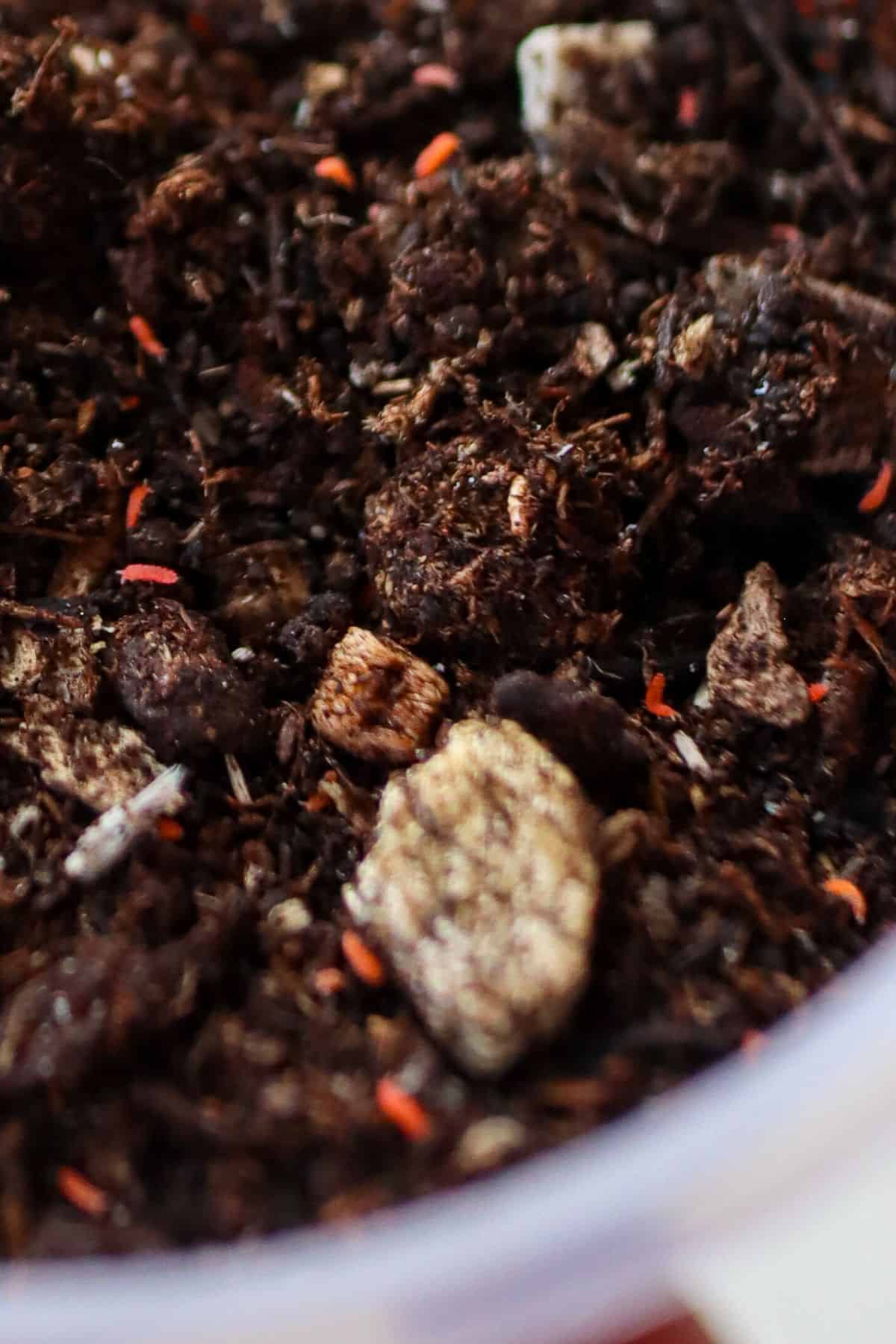Springtails really are a terrarium/vivarium builder’s best friend.
These tiny critters are mold-munching machines and the most effective way to control outbreaks in a hot and humid ecosystem.
Sounds great right? Until you get to the store and you’re faced with the choice of temperate vs tropical springtails.
You might think tropical ones are the obvious choice for a tropical terrarium… but life is never that simple.
In this guide, we’ll be comparing the two popular options and helping to push you in the right direction for your particular build.
Let’s go!

Terrarium Tribe is reader-supported. When you purchase through links on our site, we may earn an affiliate commission (at no further cost to you). 💜
Types of Springtails – An Overview
First things first, the Collembola springtail family as a whole is enormous.
We’re talking thousands of species here. But, thankfully when it comes to popular usage in the terrarium and vivarium industries, that number gets dropped right down to about a dozen.
They come in a variety of colors, from simple white or black, all the way to bright pink and shiny silver.
To further classify (and presumably simplify) these springtail species, they are designated “tropical” or “temperate.”
The weird thing is, it’s seemingly all a bit of a mess…
You’d think it refers specifically to their natural affinity for the named environment, right? Well, it’s not that. At least, the anecdotal evidence of experienced keepers doesn’t support that notion.
There’s a lot of confusion out there – so what is the difference?
Key Differences: Temperate vs Tropical Springtails
As far as I could find, there are not a lot of reliable sources that are able to decisively lay out the differences between the two.
Most of the Google search results are forum links to the popular Dendroboard.com. Of which I’ve trawled (what feels like) hundreds of threads asking the question, hoping to get some first-hand advice.
Here’s what I found:
- Tropical springtails are smaller and a bit more ant-like, with more obvious antennae, whereas temperate springtails have a (comparatively) long and chubby body like a mini caterpillar.

- As expected by the names, tropical springtails prefer warmer environments, with temperate doing better on the cooler front. But temperate will still do absolutely fine in tropical conditions.
- In our experience, tropical springtails are much “springier” too.
Springtails for Terrariums – What’s on Offer Here?
Okay, so let’s keep things simple.
The overwhelming majority of sellers offer just the two main types anyway.
- Tropical White Springtails are usually labeled as a general Collembola sp.
- Temperate White Springtails are usually the Folsomia candida species.
These are the classic, tried-and-tested species of terrarium springtails that are always a good starting point.
Which you choose seems largely dependent on whose experience you believe in most and which looks the most appealing to you.
On the temperate front, Folsomia candida are the gold standard springtails. They’re hardy and will make light work of any terrarium mold. This is the type we sell on our store.

In the broad Collembola species, you can get a variety of colored “tropical” springtails from pink to silver. Alternatively, Sinella are somewhat common and offer more tropical choices.
We tried out Bilobella braunerae, which are a fantastic bright orange.

Of course, with there being thousands of species of springtail, there are lots more that will work and are on offer from specialist sellers.
Tropical or Temperate Springtails – Which Should You Choose?
To be honest, from all my research, the answer is that it probably doesn’t matter.
Both will likely work.
In reality, there’s an enormous amount of overlap between temperate and tropical springtails.
Both are employed for the same things – as a cleanup crew and as feeders – and they’re honestly used interchangeably. It’s mostly down to personal preference and a bit of luck. I’m sure you’ll find success culturing springtails of either persuasion.
A surprising number of experienced keepers recommend that you use both the white tropical and white temperate together, too (though the pink tends to out-compete everything, apparently).
So, by the sounds of it, anything goes!
Over to You
Well, I couldn’t really get to the bottom of who decides on a tropical or temperate designation.
Personally, I’m beginning to suspect that the temperate and tropical designations only exist as a crude way of distinguishing between two different varieties of the same species.
They should all do the job just fine in a terrarium.
What’s your verdict on temperate vs tropical springtails? Let me know in the comments.
